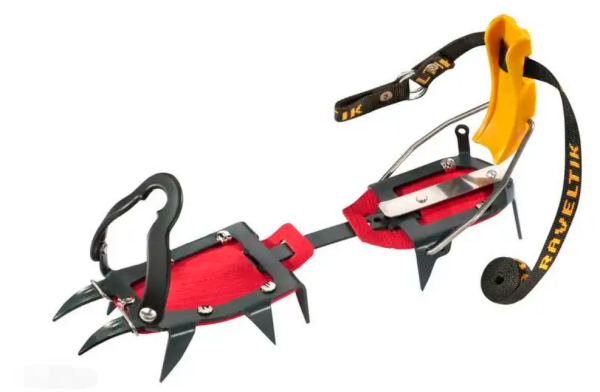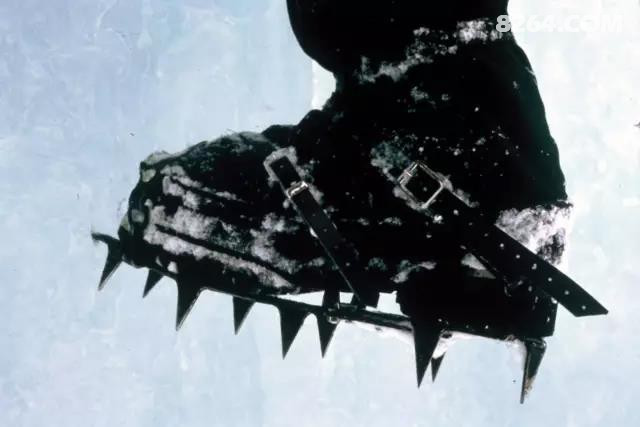Easy to use.
Crampons are necessary equipment for winter mountaineering or high altitude mountaineering. Used to stand firm on slippery ice or snow. Winter hiking boots require enough stiffness to really secure the crampons to it.
Different outdoor sports in winter require different hardness of hiking boots. That said, some crampons work well with harder hiking boots; Others work well with softer boots.
Full crampons can only be worn with hiking boots with slots in the front and back. These boots have a strong midsole, so they can trap crampons. Strapped crampons have a wider range and can be worn with any type of boot. Binding crampons are slightly more difficult to slip on. Personally think the most convenient before binding after the card, but require boots have a back card slot.

The crampons are made of ni-Mo-Cr alloy steel, which has better strength and toughness than ordinary carbon steel. After use, the ice and snow stuck to the block should be cleaned, so as to avoid the corrosion of metal into snow water, resulting in rust.
The tip of the ice finger will become blunt after a long time of use. It should be sharpened with a hand file in time. Do not use an electric grinding wheel, because the high temperature generated by the electric grinding wheel will make the metal annealing. The wire on the front of the crampon must fit well with the alpine boot. If it does not fit, it can be modified by hitting it with a rubber hammer.
Anti-stick ski:
When climbing a wet snow slope, snow clumps tend to stick between crampons and soles of shoes, forming a large wet snowball within a short time. This is very dangerous. Once a snowball is formed, it should be immediately knocked with the handle of the ice axe to clean up, to prevent slipping.
Using non-stick skis can partially solve this problem. Some brands sell ready-made products, while others make their own: Take a piece of plastic, cut it to the size of your crampon, and attach it to it. Anti-stick skis can solve the sticky snow problem to a large extent, but it should not be taken lightly.
Crampon life:
In general, it’s hard to define crampon life because there are so many variables, but there are basic principles.
1. Intermittent use, usually a single day trip with little snow and ice: 5 to 10 years.
2. Ice climbs with difficult routes and a few icefall climbs are used regularly every year: 3-5 years.
3. Professional use, expedition, opening up new routes, specialized ice climbing: 3~6 seasons (1~1.5 years).

Post time: Jul-08-2022